| Listing 1 - 10 of 23 | << page >> |
Sort by
|
Book
ISBN: 0128157216 0128157224 9780128157220 9780128157213 Year: 2020 Publisher: Amsterdam, Netherlands ; Oxford, England ; Cambridge, Massachusetts : Elsevier,
Abstract | Keywords | Export | Availability | Bookmark
 Loading...
Loading...Choose an application
- Reference Manager
- EndNote
- RefWorks (Direct export to RefWorks)
"Extreme Wildfire Events and Disasters: Root Causes and New Management Strategies highlights the urgent need for new methods to prepare and mitigate the effects of these events. Using a multidisciplinary, socio-ecological approach, the book discusses the roots of the problem, presenting a new, innovative approach to wildfire mitigation based on the operational concept of Fire Smart Territory (FST). Under the guidance of its expert editors, the book highlights new ways to prevent and respond to extreme wildfire events and disasters through sustainable development, thus revealing better management methods and increasing protection of both the natural environment and the vulnerable communities within it"--
Wildfires. --- Wildfire risk. --- Risk, Wildfire --- Bush fires --- Bushfires --- Wild fires --- Wildland fires --- Fires
Book
ISBN: 9781633216396 163321639X 1633216365 9781633216365 Year: 2014 Publisher: New York
Abstract | Keywords | Export | Availability | Bookmark
 Loading...
Loading...Choose an application
- Reference Manager
- EndNote
- RefWorks (Direct export to RefWorks)
Federal funding for wildfire management (WFM) is provided in the annual Interior, Environment, and Related Agencies appropriations bill. It funds wildfire management at the Forest Service and the Department of the Interior, which are the two principal entities tasked with federal wildfire management. Federal wildfire response activities involve preparedness, suppression, fuel reduction, site rehabilitation, and more. This book discusses the federal assistance for wildfire and response and recovery, as well as federal funding and related statistics of wildfire management.
Wildfires. --- Droughts. --- Drought --- Drouth --- Drouths --- Weather --- Bush fires --- Bushfires --- Wild fires --- Wildland fires --- Fires
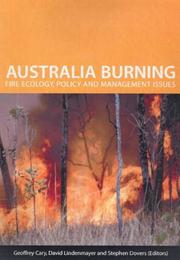
ISBN: 1283154285 9786613154286 0643090967 9780643090965 9781283154284 9780643069268 0643069267 6613154288 0643098542 Year: 2003 Publisher: Collingwood, Vic. London CSIRO Eurospan
Abstract | Keywords | Export | Availability | Bookmark
 Loading...
Loading...Choose an application
- Reference Manager
- EndNote
- RefWorks (Direct export to RefWorks)
Integrates both the natural and social sciences in addressing the issues of fire management and policy.
Wildfires --- Fire ecology --- Ecopyrology --- Fires --- Fire --- Ecology --- Bush fires --- Bushfires --- Wild fires --- Wildland fires --- Prevention and control. --- Environmental aspects
Book
ISBN: 9781633216327 1633216322 Year: 2014 Publisher: New York
Abstract | Keywords | Export | Availability | Bookmark
 Loading...
Loading...Choose an application
- Reference Manager
- EndNote
- RefWorks (Direct export to RefWorks)
Wildfires --- Fire extinction --- Fire prevention --- Bush fires --- Bushfires --- Wild fires --- Wildland fires --- Fires --- Prevention and control. --- Risk assessment.
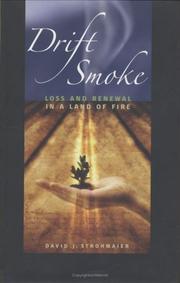
ISBN: 0874176549 9780874176544 0874176212 9780874176216 Year: 2005 Publisher: Reno University of Nevada Press
Abstract | Keywords | Export | Availability | Bookmark
 Loading...
Loading...Choose an application
- Reference Manager
- EndNote
- RefWorks (Direct export to RefWorks)
Wildfire fighters --- Fire ecology --- Wildfires --- Wildland firefighters --- Fire fighters --- Ecopyrology --- Fires --- Fire --- Ecology --- Bush fires --- Bushfires --- Wild fires --- Wildland fires --- Environmental aspects --- Prevention and control --- Strohmaier, David J.
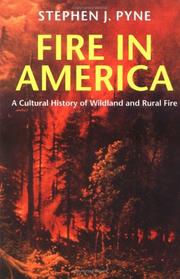
ISBN: 0295805218 9780295805214 029597592X 9780295975924 Year: 1997 Publisher: Seattle University of Washington Press
Abstract | Keywords | Export | Availability | Bookmark
 Loading...
Loading...Choose an application
- Reference Manager
- EndNote
- RefWorks (Direct export to RefWorks)
Wildfires --- Fires --- Buildings --- Conflagrations --- Fire losses --- Accidents --- Disasters --- Fire --- Bush fires --- Bushfires --- Wild fires --- Wildland fires --- History. --- Fires and fire prevention --- Plantas --- Incendios forestales --- Efectos del fuego. --- Historia.
Book
ISBN: 9780813052199 081305219X 9780813056715 0813056713 Year: 2018 Publisher: Gainesville
Abstract | Keywords | Export | Availability | Bookmark
 Loading...
Loading...Choose an application
- Reference Manager
- EndNote
- RefWorks (Direct export to RefWorks)
This book is the first to apply the new discipline of evolutionary fire ecology to a particular region: Florida and the southeastern coastal plain.
Forest fires --- Wildfires --- Fire ecology --- Ecopyrology --- Fires --- Fire --- Ecology --- Bush fires --- Bushfires --- Wild fires --- Wildland fires --- Natural disasters --- Deforestation --- Fire weather --- Environmental aspects
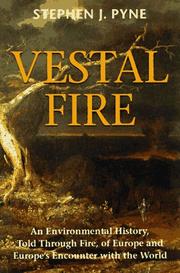
ISBN: 0295803525 9780295803524 0295975962 0295979488 9780295975962 9780295979489 Year: 1997 Publisher: Seattle, Wash. University of Washington Press
Abstract | Keywords | Export | Availability | Bookmark
 Loading...
Loading...Choose an application
- Reference Manager
- EndNote
- RefWorks (Direct export to RefWorks)
Fire ecology. --- Fires. --- Wildfires. --- Fire ecology --- Fires --- Wildfires --- Ecopyrology --- Fire --- Ecology --- Buildings --- Conflagrations --- Fire losses --- Accidents --- Disasters --- Bush fires --- Bushfires --- Wild fires --- Wildland fires --- Environmental aspects --- Fires and fire prevention --- History of Europe --- Wildfires - Europe. --- Fires - Europe. --- Fire ecology - Europe.
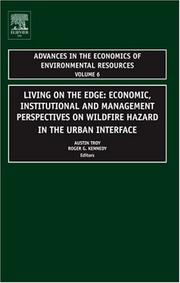
ISBN: 1281055832 9786611055837 1849500002 0080488110 9781849500005 0080453279 9780080488110 9780080453279 Year: 2009 Publisher: Bingley Emerald Group Publishing Limited
Abstract | Keywords | Export | Availability | Bookmark
 Loading...
Loading...Choose an application
- Reference Manager
- EndNote
- RefWorks (Direct export to RefWorks)
Wildfires are a fact of life throughout many arid and semi-arid regions, such as the American West. With growing population pressures in these regions, human communities are increasingly developing in so-called urban-wildland interface zones, where severe fire driven ecosystems co-exist uneasily with humans and their property. This edited volume addresses this problem and its potential solutions from an interdisciplinary perceptive, with contributions from authors in public policy, sociology, economics, ecology, computer modeling, planning, and ecology. The first section of the book addresses institutional and policy aspects, including chapters on national fire policy in the United States, local fire planning and policy, smart growth approaches to planning in fire zones, and institutional roadblocks to fuels management. The second section deals with economic aspects, including chapters on the role of information and disclosure of hazards in real estate markets, methods of underwriting fire insurance, and the consequences of state-mandated fire insurers of last resort. The third section deals with community level involvement in fire management, addressing a wide range of issues including models of community engagement, criteria for success, and approaches for institutionalizing this process, both in the US and abroad. The final section deals with management and ecology and includes chapters on the predicted effects of climate change on wildfire activity, new computer modeling tools for mitigating fire risk, and complex institutional mechanisms behind large-fire suppression in the US. It addresses institutional and policy aspects, economic aspects, community level involvement in fire management, and the management and ecology of wildfires.
Wildfires --- Prevention and control. --- Bush fires --- Bushfires --- Wild fires --- Wildland fires --- Fires --- Business & Economics --- Science --- Management of land & natural resources. --- Fire services. --- Environmental economics. --- Natural resources. --- Economics --- General. --- National resources --- Natural resources --- Resources, Natural --- Resource-based communities --- Resource curse --- Environmental quality --- Economic aspects --- Environmental aspects
Book
ISBN: 9789004424128 9004424121 9789004431225 9004431225 Year: 2021 Publisher: Leiden Brill
Abstract | Keywords | Export | Availability | Bookmark
 Loading...
Loading...Choose an application
- Reference Manager
- EndNote
- RefWorks (Direct export to RefWorks)
Over 8,200 large city fires broke out between 1000 and 1939 CE in Central Europe. Prometheus Tamed inquires into the long-term history of that fire ecology, its local and regional frequencies, its relationship to climate history. It asks for the visual and narrative representation of that threat in every-day life. Institutional forms of fire insurance emerged in the form of private joint stock companies (the British model, starting in 1681) or in the form of cameralist fire insurances (the German model, starting in 1676) They contributed to shape and change society, transforming old communities of charitable solidarity into risk communities, finally supplemented by networks of cosmopolite aid. After 1830, insurance agencies expanded tremendously quickly all over the globe: Cultural clashes of Western and native perceptions of fire risk and of what is insurance can be studied as part of a critical archaeology of world risk society and the plurality of modernities.
Fire ecology. --- Wildfires --- Environmental aspects. --- Insurance --- Human ecology. Social biology --- Hygiene. Public health. Protection --- Protection of buildings against external influences --- anno 1500-1799 --- anno 1400-1499 --- anno 1800-1899 --- Bush fires --- Bushfires --- Wild fires --- Wildland fires --- Fires --- Ecopyrology --- Fire --- Ecology --- Environmental aspects
| Listing 1 - 10 of 23 | << page >> |
Sort by
|

 Search
Search Feedback
Feedback About UniCat
About UniCat  Help
Help News
News